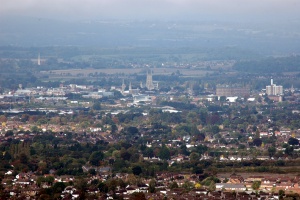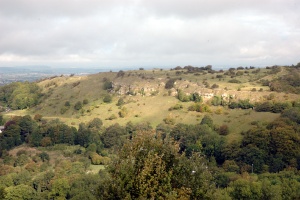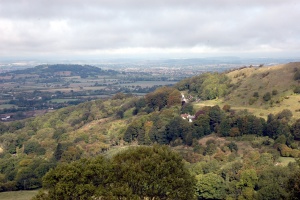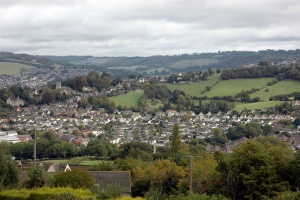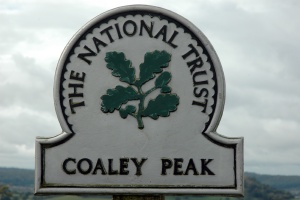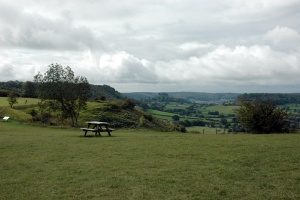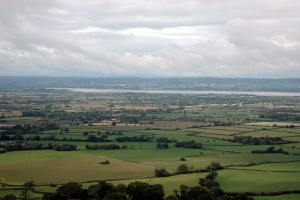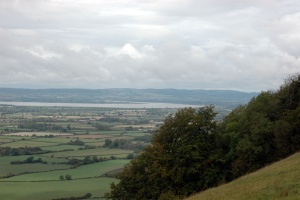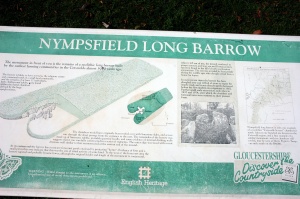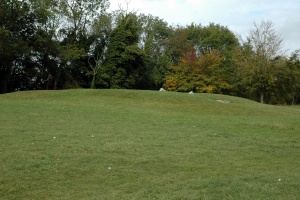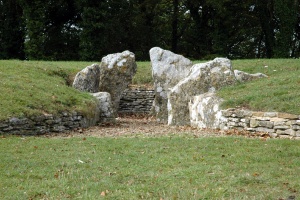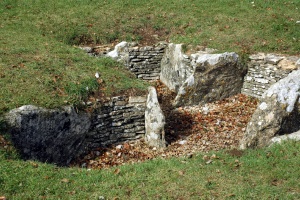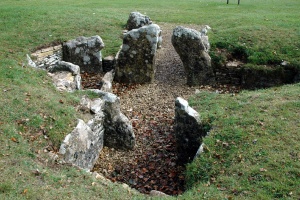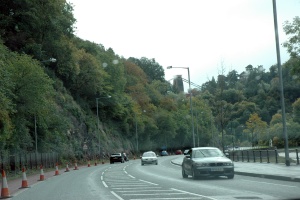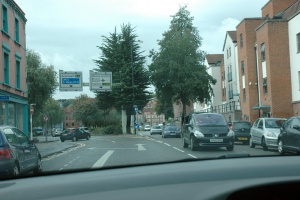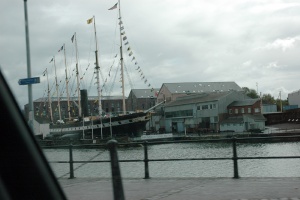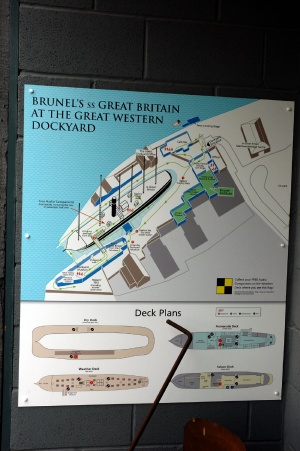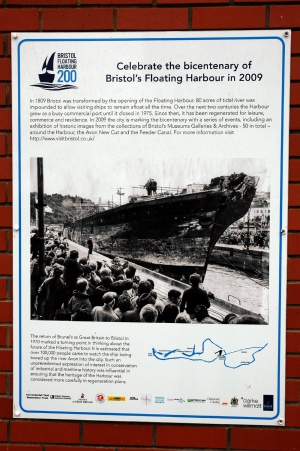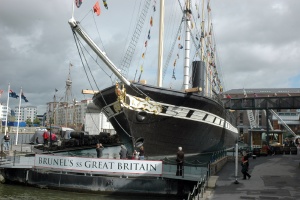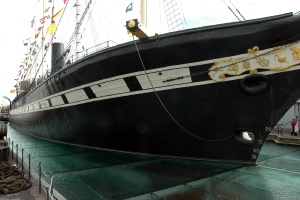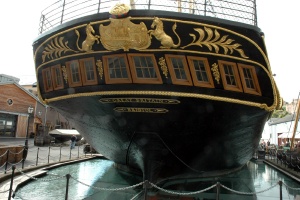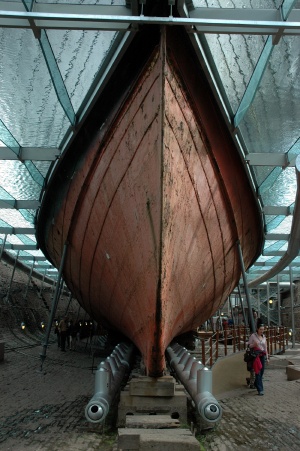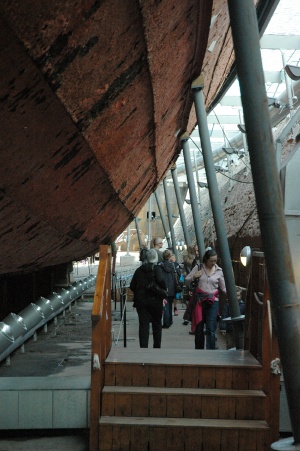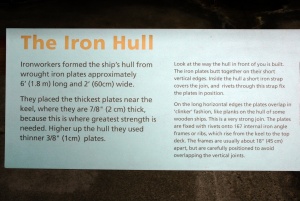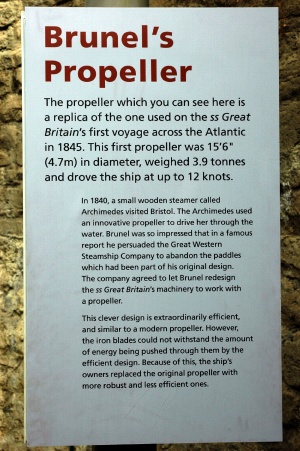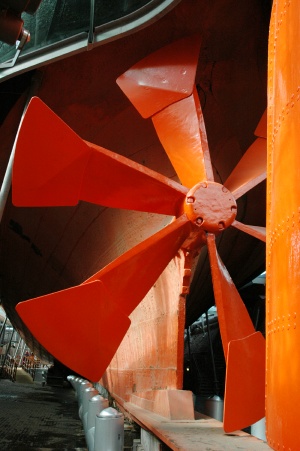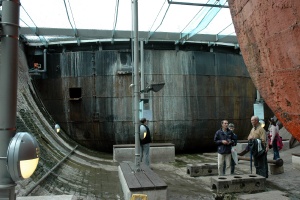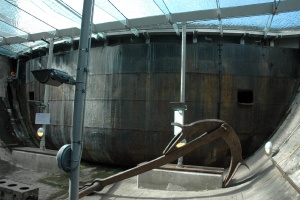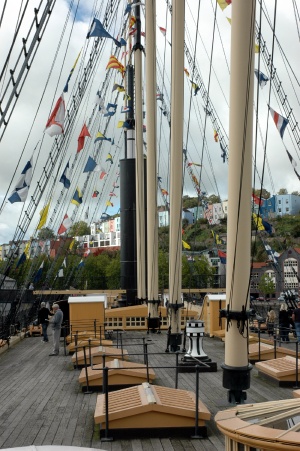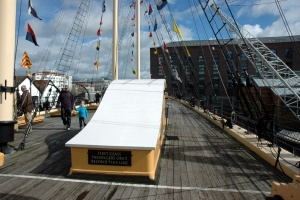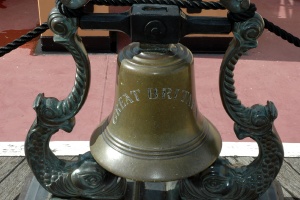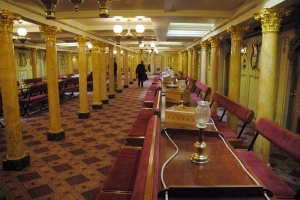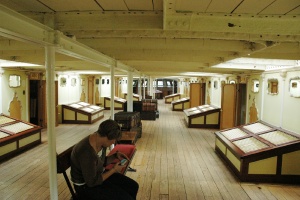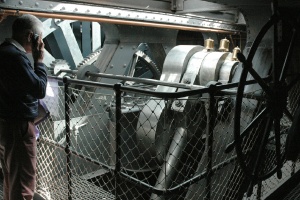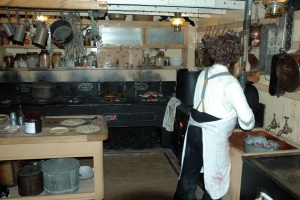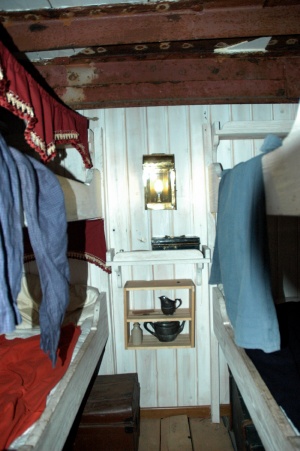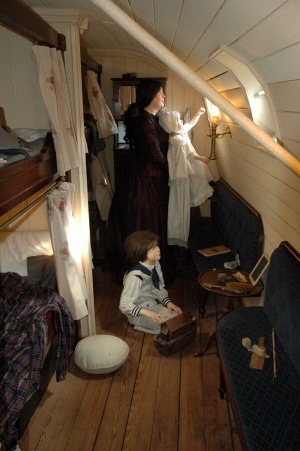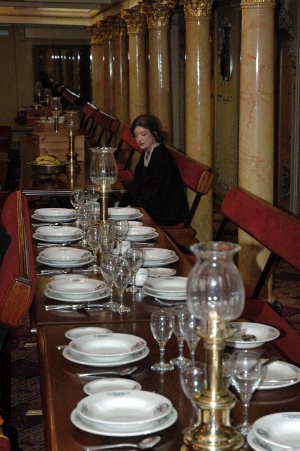Britain 2011 - Day 9IntroductionSunday was planned as a drive through the Cotswolds, then on to Bristol to look at, and walk over, the Clifton Suspension Bridge. The bridge had long been on my list of attractions, due to its design by Isambard Brunel. But despite the fine day, we met a shower of rain just at the bridge. But that did not matter, the bridge was hidden in a cloud of scaffolding and the road up the cliff from the A4 was closed off. So three strikes against seeing the bridge - again. But Bristol has another of Brunel's wonders the SS Great Britain. It is now laid up in the dry dock and this made a fitting substitute visit. But first we visited two high points for scenic views. Scenic Lookout at BirdlipNear Stroud is the small village of Birdlip. It lies close to a high escarpment that looks out over Cheltenham and the valley.
Nymphsfield Long Barrow and Coaley PeakBeyond Stroud we took a country road (B4066) that took us past an ancient long barrow. There was a large carpark and several walking trails. It was a popular dog walking place as well. The higher part was Coaley Peak. Here a group of model aircraft enthusiasts were flying radio-controlled gliders. One of them was very experienced, the other was trying out a radical new design - which he kept crashing into the hillside, resulting is a mad scramble down the slope to relaunch the plane. Back at the carpark was Nymphsfield Barrow, long ago excavated but still well preserved. It was a good example of how these barrows were constructed. Bristol and Isambard BrunelWe drove around Bristol onto the A4 hoping to see the Clifton Suspension Bridge. But with rain and scaffolding it was mostly obscured. So it was on to the other Brunel masterpiece - the first iron ship, the SS Great Britain. Not only was it iron, it was also the first large ship to use a screw propeller rather than paddlewheels. Brunel was a brave man, but not too brave to do away with the masts and sails as well. The SS Great Britain was not a huge success, but it did demonstrate the advantages of iron ships and screw propellers. The ship was salvaged from the Falkland Islands after a long history, mostly taking emigrants to Australia. It was barged back to Bristol where it is still being restored. It is an attraction well work the visit.
After the tour of the ship we headed a few miles south to Hengrove and a night at the Bristol South Premier Inn. Back to previous day Last updated: 19/06/2017 |
|||||||||||||||||||||||||||||||||||||||||||||||||||||||||||||||||||||||||||||||||||

